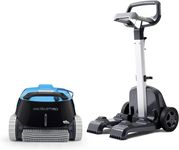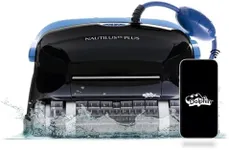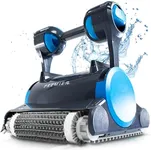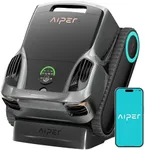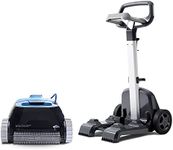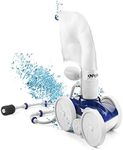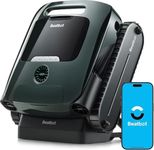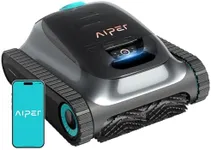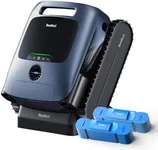Buying Guide for the Best Pool Vacuums
Choosing the right pool vacuum can make keeping your pool clean much easier and more efficient. The main goal is to pick a vacuum that matches both the size of your pool and your personal preferences for maintenance and ease of use. By understanding a few key features and specifications, you can find a model that keeps your pool sparkling with minimal hassle.Type (Manual, Suction-Side, Pressure-Side, Robotic)Pool vacuums come in several types, and each works a little differently. Manual vacuums require you to guide them around the pool, making them best for those who don't mind hands-on cleaning or have smaller pools. Suction-side vacuums attach to your pool's skimmer and use your pool's pump to move around, offering a balance between automation and cost. Pressure-side vacuums use water pressure to move, often providing stronger cleaning and are good for pools with lots of debris. Robotic vacuums are the most automated—they plug into electricity and work independently from your pool system, usually with advanced features for scrubbing and filtering. Think about how much time you want to spend cleaning and how much automation you want when choosing a type.
Pool Size CompatibilityPool vacuums are often designed for specific pool sizes, which can affect how well they clean and how long the process takes. Smaller vacuums may not efficiently cover large pools, while bigger, more powerful ones could be overkill for small pools. Make sure to check both the recommended pool length and maximum coverage area for the vacuum. If you have a modest backyard pool, a compact model should suffice, but for large, in-ground pools, more powerful and efficient designs will save you time and effort.
Filtration SystemThe filtration system determines how the vacuum collects and holds debris. Some models rely on your pool’s filtration system and deposit dirt into your pool filter, which means you’ll be cleaning your filter more often. Others come with their own filter bags or cartridges, which you empty separately—these tend to be found in robotic and pressure-side vacuums. If you prefer less frequent pool filter maintenance, consider a vacuum that has its own onboard debris collection.
Energy EfficiencyEnergy efficiency refers to how much electricity or power the vacuum uses during operation. Robotic vacuums tend to consume less energy compared to pressure-side or suction-side models that rely on your pool pump (which can be energy-intensive). Energy-efficient vacuums can help lower your utility bills and are better for the environment. If you’re concerned about ongoing operating costs or want to be eco-friendly, paying attention to this spec can guide your decision.
Cleaning Brushes and CoverageThe design and type of cleaning brushes or mechanisms matter because they determine how well the vacuum loosens dirt and scrubs surfaces. Some vacuums have rotating or oscillating brushes for scrubbing, while others use simple suction to pick up dirt. Coverage means how thoroughly the vacuum can clean various surfaces, such as floors, walls, and steps. If your pool gathers a lot of stubborn dirt or algae, look for models with robust brushes and wide coverage.
Ease of Use and MaintenanceEase of use covers everything from setup to cleaning and maintenance. Some vacuums are lightweight and simple to assemble, while others might involve hoses, connections, or programming. Maintenance includes how often you need to clean filters, replace bags, or perform upkeep. If you’re looking for a hassle-free experience, prioritize models known for easy setup, simple controls, and straightforward maintenance routines.
Cord or Hose LengthFor automatic and robotic vacuums, the length of the power cord or hose determines how much area they can cover in your pool. If the cord or hose is too short, the vacuum might not reach all areas, especially in larger pools. Make sure the length matches your pool’s dimensions, with a little extra slack for full mobility. Measure your pool’s longest length beforehand to ensure you pick a suitable model.

